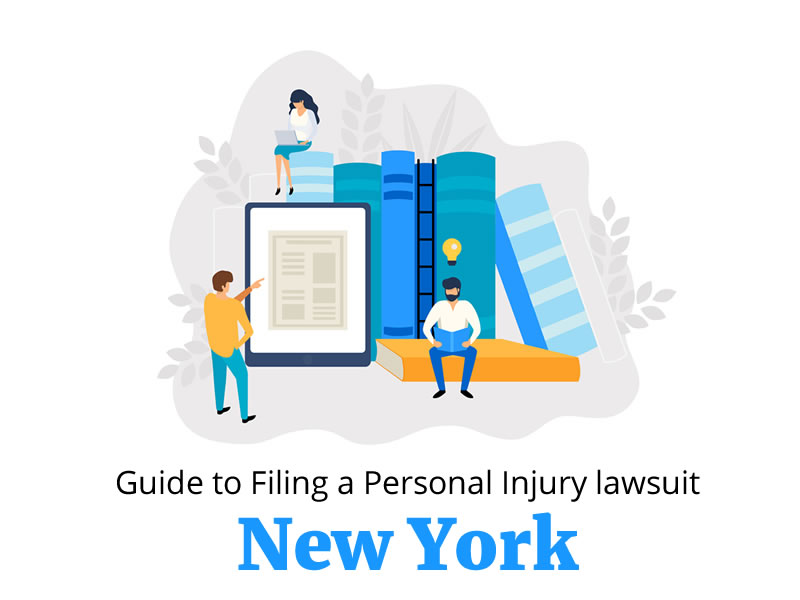If you are considering filing a lawsuit in New York after sustaining an injury, you are not alone. With around 20 million people living in the Empire State – over 8 million in New York City – accidents happen every day. Although an injury cannot be undone, New York personal injury laws allow for accident victims and their families to be made whole again in the form of financial compensation, or “damages.” If you or a loved one was harmed and want to file a claim, read on to learn more about the legal process or speak with a knowledgeable New York City personal injury lawyer.
What Is the Statute of Limitations in New York?
Each state has time limits, or statutes of limitations, for filing civil actions and other lawsuits. In New York, the time limits are as follows:
- Personal injury: 3 years from date of accident
- Medical malpractice: 2 years and 6 months from date of malpractice or from end of continuous treatment rendered by the party/entity you intend to sue
- Product liability: 3 years from date of accident
- Wrongful death: 2 years from death
If you fail to file a complaint before any of the above windows close, the New York court system will most likely refuse to hear your case and your right to compensation will be lost. Because of this, it’s important to speak with a lawyer right away after an injury if you are considering filing a lawsuit for an injury of any kind.
Compensation for New York Personal Injury Victims
If you’ve suffered an injury, property damage, or any other form of loss, you may seek financial compensation from any party that caused or otherwise contributed to your losses. In the legal world, “damages” is the term for compensation.
General damages
- Pain and suffering
- Loss of companionship or consortium
- Mental anguish
Special damages
- Medical bills
- Cost of future medical care
- Loss of earnings
- Loss of future earnings
Wrongful death damages
- Funeral and burial expenses
- Loss of financial contribution
- Loss of consortium and companionship
- Emotional distress of surviving family
In certain situations, the court might award punitive damages. These are only given to an injured plaintiff when the negligent behavior of the defendant was reprehensible or despicable.
Injuries You Can Sue for in New York
- Motor vehicle accidents including car, motorcycle or truck accidents
- Head and brain injuries
- Burn injuries
- Construction accidents
- Medical malpractice
- Wrongful death
- Mesothelioma and other asbestos-related cancers
- Slip and fall accidents
- Spinal cord injuries
- Bicycle accidents
- Pedestrian accidents
- Nursing home abuse
- Birth injuries
- Dangerous or defective products
New York Negligence Laws
All personal injury cases hinge around the idea of negligence. Negligence is the idea that a person or entity failed to take proper care in doing something and as a result, someone else was negatively affected. In a more specific legal context, proving negligence requires showing that:
- A duty of care existed between two people or entities, meaning there was a legal obligation to act in a reasonable manner
- Through action or inaction, the defendant breached that duty
- Because of that breach, the plaintiff was harmed or injured
- That harm or injury caused real damage, either measurable or immeasurable
The above is a general outline for all different types of negligence claims. However, New York follows a specific type of negligence law known as pure comparative negligence. This means that a plaintiff’s ability to recover damages is reduced proportionally by their share of fault. For example, if a person is in a car accident caused by someone else but was not wearing their seatbelt, then the damages the defendant pays would be reduced by the plaintiff’s own negligence of not wearing a seatbelt. Essentially, this system takes into account the fact that sometimes a plaintiff can be partially responsible for their own injuries.
Car Insurance in New York
Car accidents are one of the most common personal injury cases so it is important to take a look at insurance in the state of New York. New York follows a no fault system, which means that regardless of fault, you look to your own insurance company to pay for injuries and damage. Often referred to as PIP insurance, only 12 states use this type of system. Since your own insurance pays for any damages incurred, the minimum insurance requirements are as follows:
- $10,000 for property damage for a single accident
- $25,000 for bodily injury and $50,000 for death for a person involved in an accident
- $50,000 for bodily injury and $100,000 for death for two or more people in an accident
It is important to note that these are just the minimums and most drivers carry insurance that have higher liability limits.
How Much Does it Cost to Hire a Lawyer?
Although most people associate litigation with a high cost, almost all personal injury lawyers will offer to take your case on a contingency basis. This means that you only pay a portion of your winnings to the attorney if they win your case. The average percentage for contingency fee agreements is 33% but this can change depending on the specifics of your case and other costs you may incur along the way.
If you have further questions about your lawsuit or would like to be put in contact with an attorney in your state, please reach out to us today.
